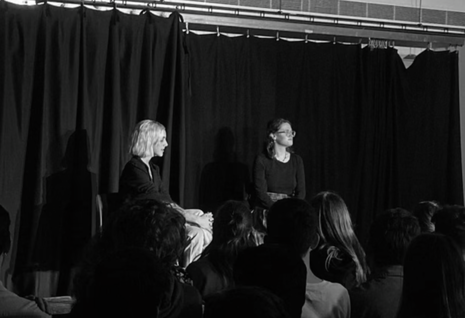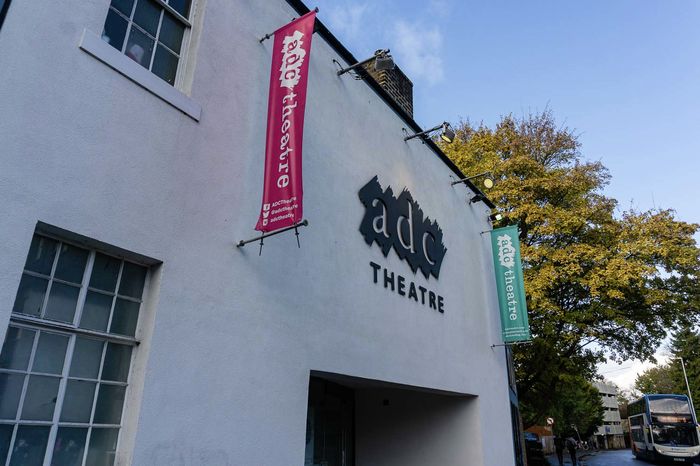Howlers, hecklers, and honouring the female voice in comedy
Caitlin Parry explores how gender imbalances in the comedy industry manifest in Cambridge’s own stand-up circuit

Fern Brady, Ed Gamble, Phil Wang, Russell Howard: household names that today sell out arenas and nationwide tours, but once fought to find their footing at Cambridge’s very own Wolfson Howlers. Wolfson’s student stand-up comedy nights have been running for 15 years, and it was at one of these Howlers that a friend of mine found themselves in early Michaelmas.
With tickets costing just £5 on the door, I am told it was a busy evening, which should have been encouraging for the fresh wave of student comedians waiting to perform their routines. However, as the acts took to the stage, my friend noticed an uncomfortable pattern of heckling emerging: while many of the male stand-ups received a warm reception, female comics were subjected to a far frostier response.
“Understandings of what can be alluded to, what can be laughed at, and ultimately, what is ‘funny’ seem to differ”
Was this a coincidence? Did the audience simply warm to the men’s routines more? Did their jokes just happen to land better? Perhaps. Yet it struck me that the heckling may have been symptomatic of a broader problem across the comedy industry. An inherent reluctance to accept female comedy writers into the limelight was noted by a report undertaken by the Writers’ Guild in 2018, which found that just 11% of comedy TV episodes were predominantly written by women.
The organisation commented that this was indicative of a “serious lack of authentic female voices and opportunity to tell their stories”, but this seems an unreasonable, unfair excuse. There are women working hard within the comedy circuit, both within the stand-up industry and in sketch shows and pantos; we just need to encourage more to come forward. To quote our very own Sandi Toksvig: “There is no shortage of talented women […] and therefore no excuse that so few of them are getting commissions.”
Closer inspection of the stand-up scene at Cambridge also reveals something of a gendered inequality, marked by a difference in expectations of what women need to be able to offer their audiences. Poppy Maxwell, a creative director who has worked at the ADC, told me that “female stand-ups, as well as sketch writers, both in Cambridge and in the professional world, are working to a higher bar.” Understandings of what can be alluded to, what can be laughed at, and ultimately, what is ‘funny’ seem to differ.
“There’s this assumption that men and women don’t find the same things funny, so they shouldn’t be making the same jokes,” she says. “Similarly, there’s an expectation that women should make jokes about the ‘female’ experience, and so when they don’t include this topic in their stand-up, they are often criticised for ignoring their identity. Men are not held to the same standard.” When talking about sex, Poppy has noticed that jokes made by women just “don’t receive the same reception” as those made by many male comedians.
And so, an uncomfortable paradox emerges: female comics are expected to refer to their own sexuality and identity in their work, but explicit references are to be avoided. For women trying to make it in comedy, this paradox is certainly a difficult one to navigate. Perhaps it’s no wonder that creative directors such as Isaac Tompkinson of the Pembroke Players — one of the university’s most successful comedy groups — cites a “potential lack of confidence” as the reason why there are often few female and non-binary students auditioning for stand-up slots. Isaac pointed out that in the Players’ midterm comedy night, known as a ‘Smoker’, only one stand-up act was female.
There is cause to be optimistic, though: while both Poppy and Isaac offered candid assessments of the Cambridge comedy circuit, they also spoke of how rewarding participation can be, especially with university being the perfect time and place for experimentation. For student comedy writer and performer Toria White, Cambridge is home to “a great community of comics”, in which “traditionally underrepresented genders in the genre are more commonplace than people may think”.
“It is, of course, a daunting prospect to put oneself out like this”
There are areas where balance is more observable. For instance, the proportion of women in the Pembroke pantos is closer to 50%, and Isaac reported that women and non-binary people made up 75% of one of the group’s Michaelmas sketch shows. “There are plenty of opportunities to get involved in women and non-binary Smokers,” Poppy confirms: “it’s a brilliantly safe place to practise comedy, to meet other comics, and find collaborative partners for sketches.”
It is, of course, a daunting prospect to put oneself out like this: stage fright, fears of public speaking, and the prospect of a tough audience naturally instil fear in any aspiring comic – student or otherwise.
Stand-up is “a skill like any other”, says Isaac: comedians get better and more comfortable the more they perform. Any fresher is welcome to come along to the ADC and pick up tips and tricks from seasoned second and third years and, ultimately, have fun.
Overall, we should be confident in the direction of Cambridge’s comedy circuit. Women and non-binary students are increasingly participating in stand-up, pantomimes, and sketch shows – and, in many areas, gender balances are evenly split. But there is also room for improvement, especially in relation to the sexist attitudes and expectations placed on female comics that often frame audience responses.
For Poppy, the solution lies in actively encouraging participation: “Please get involved! There are too many men; we need more women!” Perhaps a similar approach should be taken in order to raise awareness of the wider opportunities for women to access the comedy industry as a whole, not just those available at Cambridge.
As the treasurer and ex-chair of the Writers’ Guild, Gail Renard, exclaimed: “We have glorious stories to tell. Let us tell them.”
 News / Cambridge students set up encampment calling for Israel divestment6 May 2024
News / Cambridge students set up encampment calling for Israel divestment6 May 2024 News / Cambridge postgrad re-elected as City councillor4 May 2024
News / Cambridge postgrad re-elected as City councillor4 May 2024 News / Proposed changes to Cambridge exam resits remain stricter than most7 May 2024
News / Proposed changes to Cambridge exam resits remain stricter than most7 May 2024 News / Some supervisors’ effective pay rate £3 below living wage, new report finds5 May 2024
News / Some supervisors’ effective pay rate £3 below living wage, new report finds5 May 2024 Fashion / Class and closeted identities: how do fits fit into our cultures?6 May 2024
Fashion / Class and closeted identities: how do fits fit into our cultures?6 May 2024






